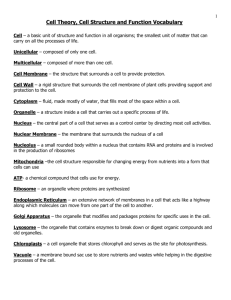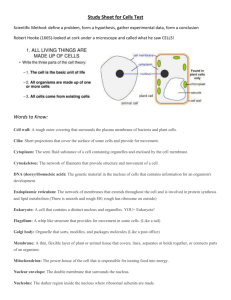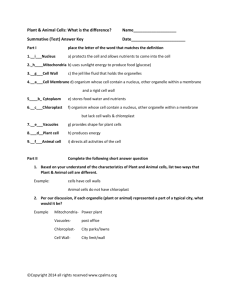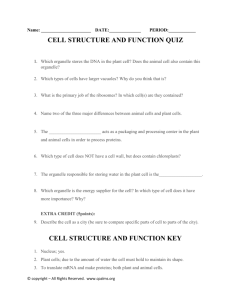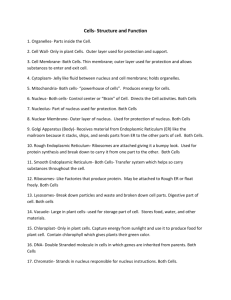Cell Study Guide Answers
advertisement
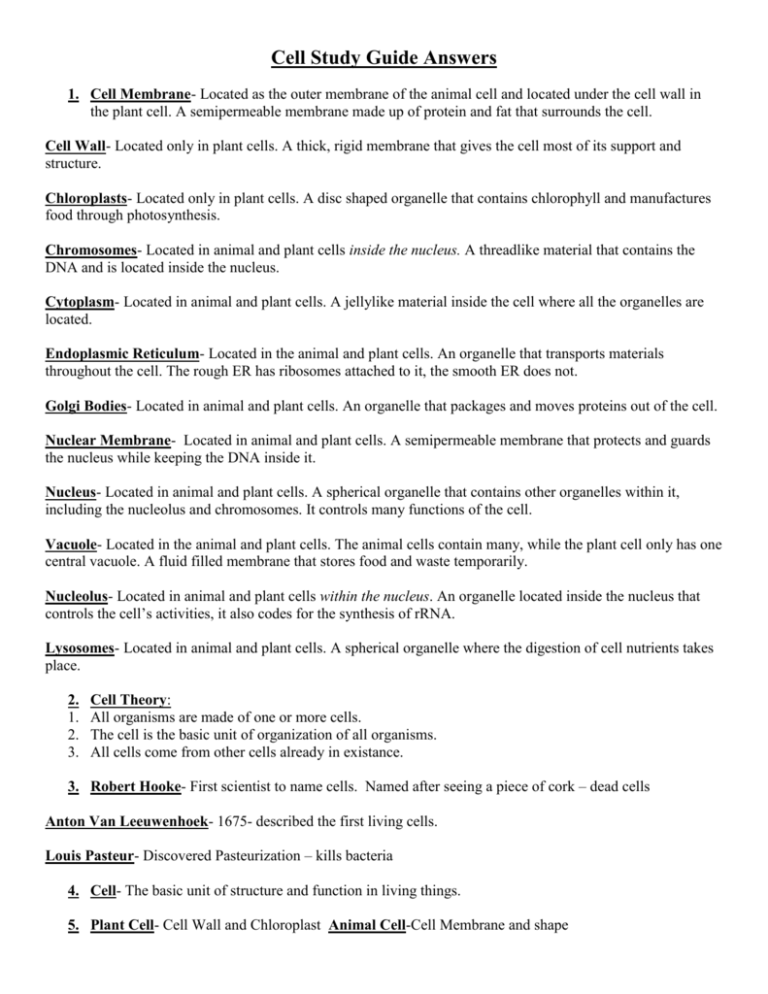
Cell Study Guide Answers 1. Cell Membrane- Located as the outer membrane of the animal cell and located under the cell wall in the plant cell. A semipermeable membrane made up of protein and fat that surrounds the cell. Cell Wall- Located only in plant cells. A thick, rigid membrane that gives the cell most of its support and structure. Chloroplasts- Located only in plant cells. A disc shaped organelle that contains chlorophyll and manufactures food through photosynthesis. Chromosomes- Located in animal and plant cells inside the nucleus. A threadlike material that contains the DNA and is located inside the nucleus. Cytoplasm- Located in animal and plant cells. A jellylike material inside the cell where all the organelles are located. Endoplasmic Reticulum- Located in the animal and plant cells. An organelle that transports materials throughout the cell. The rough ER has ribosomes attached to it, the smooth ER does not. Golgi Bodies- Located in animal and plant cells. An organelle that packages and moves proteins out of the cell. Nuclear Membrane- Located in animal and plant cells. A semipermeable membrane that protects and guards the nucleus while keeping the DNA inside it. Nucleus- Located in animal and plant cells. A spherical organelle that contains other organelles within it, including the nucleolus and chromosomes. It controls many functions of the cell. Vacuole- Located in the animal and plant cells. The animal cells contain many, while the plant cell only has one central vacuole. A fluid filled membrane that stores food and waste temporarily. Nucleolus- Located in animal and plant cells within the nucleus. An organelle located inside the nucleus that controls the cell’s activities, it also codes for the synthesis of rRNA. Lysosomes- Located in animal and plant cells. A spherical organelle where the digestion of cell nutrients takes place. 2. 1. 2. 3. Cell Theory: All organisms are made of one or more cells. The cell is the basic unit of organization of all organisms. All cells come from other cells already in existance. 3. Robert Hooke- First scientist to name cells. Named after seeing a piece of cork – dead cells Anton Van Leeuwenhoek- 1675- described the first living cells. Louis Pasteur- Discovered Pasteurization – kills bacteria 4. Cell- The basic unit of structure and function in living things. 5. Plant Cell- Cell Wall and Chloroplast Animal Cell-Cell Membrane and shape 6. Unicellular- One celled Multicellular- more than one cell (ex. Humans) 7. Eukaryotic cells- cells that have a nucleus Prokaryotic cells- cells that do not have a nucleus 8. Organelle- structures in the cell. Any of a number of organized or specialized structures within a living cell. 9. Vacuole - more than one in an animal cell and are smaller, only one central vacuole in a plant cell.





